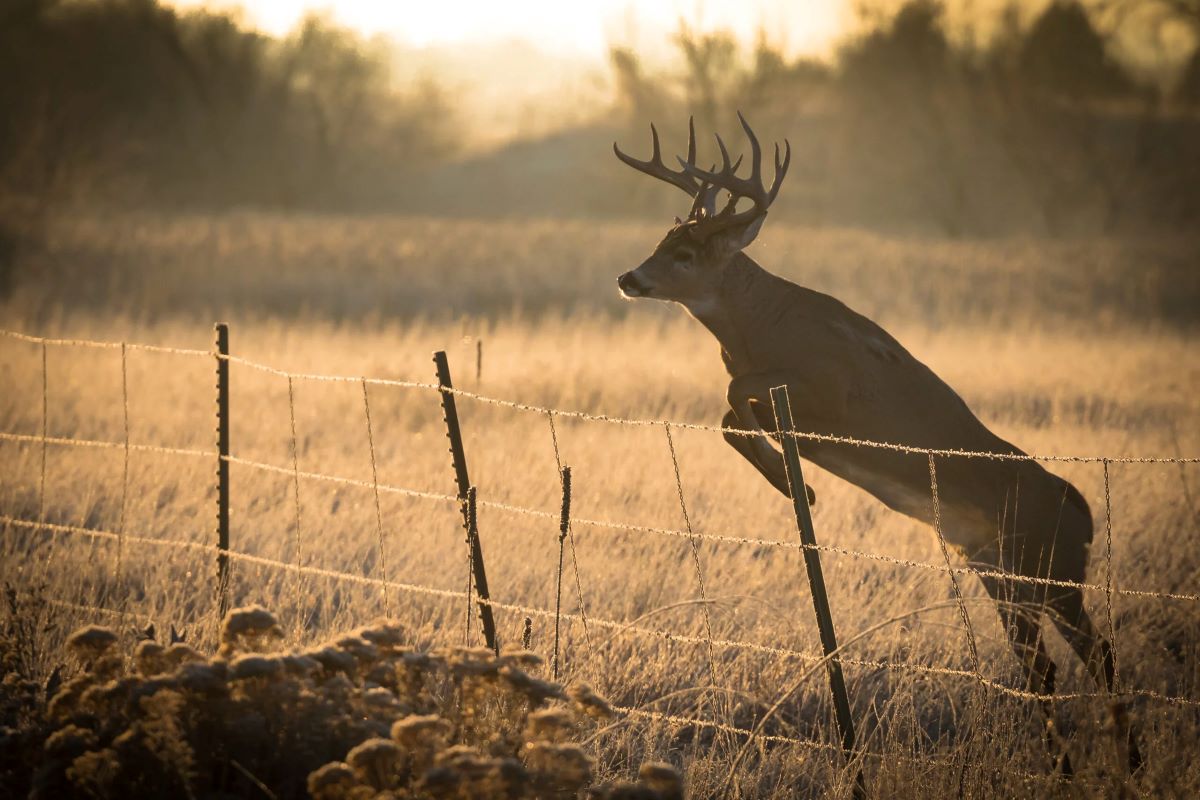

Articles
How High Can Deer Jump Over A Fence
Modified: February 23, 2024
Discover fascinating articles about how high deer can jump over a fence and gain valuable insights into their impressive agility and athleticism.
(Many of the links in this article redirect to a specific reviewed product. Your purchase of these products through affiliate links helps to generate commission for Storables.com, at no extra cost. Learn more)
Introduction
Have you ever wondered how high deer can jump over a fence? Deer are known for their agility and impressive jumping abilities, allowing them to navigate various terrains with ease. Understanding the factors that affect a deer’s jumping ability can provide valuable insights into their behavior and help us design effective fencing solutions to protect our property.
In this article, we will explore the average height deer can jump, the variations in their jumping abilities, and the physical adaptations that enable them to perform such impressive leaps. We will also discuss how deer jump over fences and the potential risks associated with their jumping behavior. Finally, we will delve into the implications for fence design and mitigation strategies to minimize the risks posed by deer.
So, let’s dive into the fascinating world of deer jumping and gain a deeper appreciation for these remarkable creatures!
Key Takeaways:
- Deer possess remarkable jumping abilities, with an average height of 6 to 8 feet. However, variations exist based on factors such as age, size, and environmental conditions, showcasing their adaptability and agility.
- Effective mitigation strategies, such as taller fences, repellents, and population management, can minimize the risks associated with deer jumping behavior. Careful consideration of fence design and maintenance is crucial for deterring deer and protecting property.
Read more: How High Can Rabbits Jump Over Garden Fence
Factors Affecting Deer Jumping Ability
Several factors influence a deer’s jumping ability. These factors include the age, size, and physical condition of the deer, as well as the type of terrain and the presence of obstacles.
The age of a deer can impact its jumping ability. Young deer, known as fawns, may have limited jumping skills compared to adult deer. As fawns grow older, their muscles develop, allowing them to jump higher and farther. Adult deer are generally more adept at navigating obstacles and clearing fences.
The size of a deer is also a factor to consider. Larger deer tend to have more power and strength in their hind legs, enabling them to propel themselves higher and making it easier for them to clear obstacles. Smaller deer may struggle to jump as high due to their size and physical limitations.
The physical condition of a deer plays a crucial role in its jumping ability. Healthy and fit deer have stronger muscles, enabling them to generate more force and jump higher distances. On the other hand, injured or malnourished deer may have weakened muscles, hindering their jumping prowess.
The type of terrain impacts a deer’s jumping ability. Deer are incredibly adaptable creatures, capable of leaping across various landscapes. Soft and moist surfaces, such as grass or mud, provide better traction and launch pads for jumps. In contrast, rough or rocky terrains may pose challenges and limit the height and distance a deer can jump.
Obstacles in the deer’s path can also affect their jumping ability. If there are obstructions, such as fallen trees or dense vegetation, the deer may need to adjust their jumping technique or alter their path to navigate around them. These obstacles can add complexity and challenge to a deer’s jump, potentially impacting their jumping height.
In the next section, we will explore the average height that deer can jump, shedding light on their extraordinary leaping capabilities.
Average Height Deer Can Jump
Deer are renowned for their ability to clear obstacles and jump impressive heights. On average, a healthy adult deer can jump a height of about 6 to 8 feet. This remarkable jumping ability allows deer to effortlessly navigate over fences, fallen logs, and other barriers that may come in their way.
However, it’s important to note that the average jumping height can vary depending on the species of deer and individual factors such as age, size, and physical condition. Larger deer, such as the majestic white-tailed deer, are usually capable of jumping higher than smaller species like the mule deer. Additionally, adult deer tend to have more developed muscles and greater jumping power compared to younger deer.
It’s also worth mentioning that deer can exhibit extraordinary agility and flexibility when it comes to jumping. They can quickly assess the height of an obstacle and adjust their jumping technique accordingly. This adaptability allows them to clear fences and outsmart potential predators or reach desired food sources.
While the average jumping height of 6 to 8 feet is impressive, it’s important to remember that some deer may be capable of surpassing this height. There have been reports of deer clearing fences as high as 10 feet in certain situations. These exceptional cases may involve larger, more powerful deer with optimal physical conditions.
Understanding the average height that deer can jump provides valuable insights for property owners and wildlife managers. It helps in determining the appropriate fence height to effectively deter deer and prevent them from accessing certain areas. However, it’s crucial to consider that deer can exhibit variations in jumping heights, which we will explore in the next section.
Variations in Deer Jumping Heights
While the average jumping height of deer falls within the range of 6 to 8 feet, there can be significant variations in their jumping capabilities. These variations can be attributed to a combination of factors, including individual fitness, experience, and environmental conditions.
Individual fitness plays a crucial role in determining the jumping height of a deer. A strong and healthy deer with well-developed muscles can generate more power to propel itself higher and overcome greater obstacles. Conversely, a deer that is in poor physical condition or malnourished may have limited jumping abilities and struggle to clear fences or barriers.
Experience also plays a role in a deer’s jumping performance. Deer that have encountered fences or other obstacles in the past may have learned to refine their jumping techniques over time. They may develop a better sense of timing, agility, and spatial awareness, allowing them to execute more precise and effective jumps.
Environmental conditions can also impact a deer’s jumping height. Soft and springy ground can provide a better launching pad, allowing deer to achieve higher jumps. On the other hand, slippery or uneven terrain may pose challenges and limit the jumping heights deer can reach. Weather conditions, such as rain or snow, can further influence jumping abilities by affecting ground conditions and the deer’s overall comfort and confidence.
It’s worth noting that certain situations or perceived threats can also trigger deer to jump higher than usual. For example, if a deer senses danger or is startled, it may exhibit a heightened adrenaline response, enabling it to perform extraordinary jumps to escape potential predators.
All these factors contribute to the variations in deer jumping heights. It’s important to consider these variations when designing effective fencing strategies or other means of deer management. By understanding the potential range of jumping capabilities, property owners can implement measures that adequately address the specific needs and behaviors of deer populations in their area.
In the next section, we will explore the physical adaptations that enable deer to execute their remarkable jumps.
Physical Adaptations That Enable Deer to Jump
Deer possess a remarkable set of physical adaptations that enable them to execute their impressive jumps. These adaptations are finely tuned to maximize their jumping abilities and ensure their survival in various landscapes.
One of the key physical adaptations of deer is their robust and powerful hind legs. The muscles in their hindquarters, particularly the gluteal and hamstring muscles, provide the necessary strength and propulsion for jumping. When a deer prepares for a jump, these muscles contract rapidly, generating enough force to propel the deer into the air.
Another vital adaptation is the structure of deer’s legs and feet. Their long and slender legs allow for greater reach and flexibility during a jump. The bones in their legs, such as the femur and tibia, are lightweight yet sturdy, enabling efficient propulsion without compromising agility. Additionally, the hooves of deer have a unique structure, consisting of hard outer coverings over their delicate toes. This design provides traction and stability during takeoff and landing, minimizing the risk of slipping or injury.
The skeletal anatomy of deer also plays a role in their jumping prowess. Their lumbar spine has a flexible and spring-like quality, allowing them to arch their backs and generate additional propulsive force during a jump. This flexibility helps in achieving greater heights and distances. Furthermore, the tail of a deer acts as a counterbalance, aiding in maintaining stability and control throughout the jumping process.
Deer also possess exceptional senses that contribute to their jumping abilities. Their keen eyesight allows them to accurately judge distances and heights, helping them gauge the precise timing and angle required for a successful jump. They rely on their acute hearing to detect potential threats or obstacles that may require them to adjust their jumping strategy.
Lastly, the overall body structure and proportion of deer contribute to their agility and balance. Their lightweight build and center of gravity positioned closer to the front of their bodies allow for quick and efficient movements. This agility enables them to navigate obstacles, change direction mid-air, and land safely after a jump.
These physical adaptations, combined with the deer’s innate instincts and learning experiences, form a remarkable package that enables these animals to execute their graceful and powerful jumps. In the next section, we will delve into the mechanics of how deer actually jump over fences.
Deer can jump up to 8 feet high, so when building a fence to keep them out, make sure it is at least that height to be effective.
Read more: How High A Fence Can A Coyote Jump
How Deer Jump Over Fences
Deer have evolved an impressive ability to jump over fences with remarkable agility and precision. When faced with an obstacle like a fence, they rely on a combination of physical adaptations and instinctive behaviors to clear it.
Prior to making the jump, a deer will use its acute eyesight to assess the height and width of the fence. By accurately judging the distance and size of the obstacle, the deer can determine the required force and trajectory to clear it.
As the deer prepares for the jump, it will lower its body, bending its legs to compress the powerful muscles in its hindquarters. This action stores energy in these muscles, functioning like a coiled spring waiting to be released.
Next, the deer propels itself upward and forward using a powerful push-off from its hind legs. The force generated from the rapid contraction of the gluteal and hamstring muscles launches the deer into the air, providing the initial upward momentum required to clear the fence.
During the mid-air phase of the jump, the deer employs its flexibility and agility to adjust its body position as needed. It tucks its front legs close to its chest and extends its hind legs fully to maximize the distance covered.
At the peak of the jump, the deer elongates its body to maintain balance and control. Its flexible spine allows it to arch its back, extending its reach and aiding in achieving greater height and clearance over the fence.
As the deer begins the descent, it prepares for a smooth landing by extending its front legs and positioning them for impact. The deer uses its tail as a counterbalance to maintain stability and control throughout the jump.
Upon landing, the deer’s hooves absorb the impact, dissipating the force and minimizing any potential injury. The sturdy structure of their hooves and the flexibility of their leg joints allow for a safe and controlled landing.
It’s important to note that different species of deer may exhibit variations in their jumping techniques, but the general principles remain the same. Regardless of the specific technique employed, the combination of physical adaptations, keen senses, and instinctive behaviors enables deer to effortlessly jump over fences and other obstacles in their natural habitat.
In the next section, we will explore the potential risks associated with deer jumping behavior and possible mitigation strategies.
Potential Risks and Mitigation Strategies
While deer jumping over fences may be a fascinating sight, it can pose certain risks and challenges for landowners, farmers, and property managers. Understanding these risks and implementing appropriate mitigation strategies is essential to protect crops, property, and ensure the safety of both wildlife and humans.
One of the primary risks associated with deer jumping behavior is damage to agricultural crops and gardens. Deer may jump over fences in search of food, causing significant damage to crops such as corn, soybeans, and vegetables. This can result in substantial financial losses for farmers and impact local food production.
Another potential risk is damage to property, particularly when deer jump over residential or commercial fences. Damage to gardens, landscaping, and ornamental plants can be costly and labor-intensive to repair.
Deer jumping over fences can also pose a safety hazard for motorists on roads adjacent to wooded areas. If deer jump over fences and venture onto roads, they increase the risk of vehicle collisions, jeopardizing both the safety of drivers and the well-being of the deer.
To mitigate these risks, various strategies can be implemented:
- Install taller fences: Raising the height of fences can be an effective deterrent to prevent deer from jumping over. The average height of 8 feet is often sufficient, but in areas with high deer populations, taller fences may be necessary.
- Use deer repellents: Applying proven deer repellents to crops, gardens, or ornamental plants can help deter deer from approaching in the first place. These repellents can emit scents or tastes that are unpleasant to deer, preventing them from causing damage.
- Construct sturdy and angled fence designs: Building fences with angled tops can create a physical barrier that makes it more challenging for deer to jump over. Additionally, ensuring that fences are sturdy and well-maintained will further discourage deer from attempting to clear them.
- Implement population management: In areas where deer populations are overly abundant, responsibly managing the population through hunting or controlled culling can help reduce the pressure on agricultural areas and minimize the risks associated with deer jumping over fences.
- Utilize motion-activated deterrents: Motion-activated deterrents such as lights, noise-making devices, or sprinkler systems can startle deer and discourage them from approaching fenced areas, reducing the likelihood of them attempting to jump over.
It’s important to evaluate and assess the specific needs and risk factors of each property or agricultural area to determine the most appropriate mitigation strategies and implement them accordingly. Combining multiple strategies may yield the best results in effectively deterring deer and minimizing potential risks.
Now, let’s explore the implications of deer jumping behavior for fence design.
Implications for Fence Design
The remarkable jumping abilities of deer have significant implications for fence design, especially in areas where it is crucial to keep them from accessing specific locations. Consideration of deer behavior and their physical capabilities is essential to develop effective fencing solutions.
When designing fences to deter deer, the height is a critical factor. Based on the average jumping height of 6 to 8 feet, it is recommended to construct fences that are at least 8 feet tall to provide an adequate barrier. However, in areas with particularly agile or large deer populations, taller fences may be necessary to ensure effectiveness.
In addition to height, the design of the fence can play a role in deterring deer. Adding a physical barrier on top of the fence, such as angled or overhanging components, can create an additional obstacle that discourages deer from attempting to jump over. These angled or overhanging sections can disrupt the deer’s leap and make it harder for them to clear the fence.
Visibility is also an important consideration. Deer have excellent eyesight and can accurately assess the height and feasibility of a jump. Open-style fences, such as ones made of wire mesh or rails spaced apart, allow deer to evaluate the height of the obstacle more easily. Solid fences, on the other hand, may obscure the visibility of the other side, potentially making the jump more challenging for deer.
Regular maintenance of fences is crucial to its effectiveness in deterring deer. Ensuring that the fence remains in good condition, without any holes or weakened sections, can help prevent deer from exploiting any weaknesses and attempting to jump over.
It’s important to note that no fence design can guarantee total exclusion of deer. However, with careful consideration of height, design, visibility, and regular maintenance, fences can significantly reduce the instances of deer jumping over and accessing restricted areas.
Ultimately, the specific requirements for fence design will depend on the unique circumstances of the property and the prevalence of deer in the area. Consulting with professionals experienced in wildlife management and fence design can provide valuable insights and guidance for developing effective and tailored solutions.
Now, let’s wrap up with a summary of the key points discussed in this article.
Conclusion
Deer are truly remarkable creatures with exceptional jumping abilities. Their agility, strength, and physical adaptations enable them to effortlessly navigate various terrains and clear impressive heights. Understanding the factors influencing their jumping ability, the average height they can jump, and the variations in their jumping capabilities provides valuable insights for managing and protecting properties.
Deer possess adaptations such as powerful hind legs, flexible spines, and sturdy hooves, which contribute to their remarkable jumping prowess. Their keen senses and innate instincts aid in accurately judging distances and adjusting their jumping techniques accordingly.
While the average height deer can jump ranges from 6 to 8 feet, there can be significant variations based on factors such as age, size, physical condition, and environmental conditions. Some deer may even surpass these heights in exceptional circumstances.
Deer jumping over fences can pose risks to agricultural crops, property, and road safety. Implementing effective mitigation strategies, such as installing taller fences, using repellents, constructing angled fence designs, and population management, can help minimize these risks.
When designing fences to deter deer, considerations such as fence height, design, visibility, and regular maintenance are crucial. Properly designed and maintained fences can significantly reduce the instances of deer jumping over and accessing restricted areas.
By understanding the capabilities of deer and taking the necessary precautions, property owners, farmers, and wildlife managers can strike a balance between protecting their assets and respecting the natural behaviors of these magnificent creatures.
So, next time you spot a deer gracefully leaping over a fence, take a moment to appreciate the remarkable abilities and adaptations that enable them to do so.
Frequently Asked Questions about How High Can Deer Jump Over A Fence
Was this page helpful?
At Storables.com, we guarantee accurate and reliable information. Our content, validated by Expert Board Contributors, is crafted following stringent Editorial Policies. We're committed to providing you with well-researched, expert-backed insights for all your informational needs.

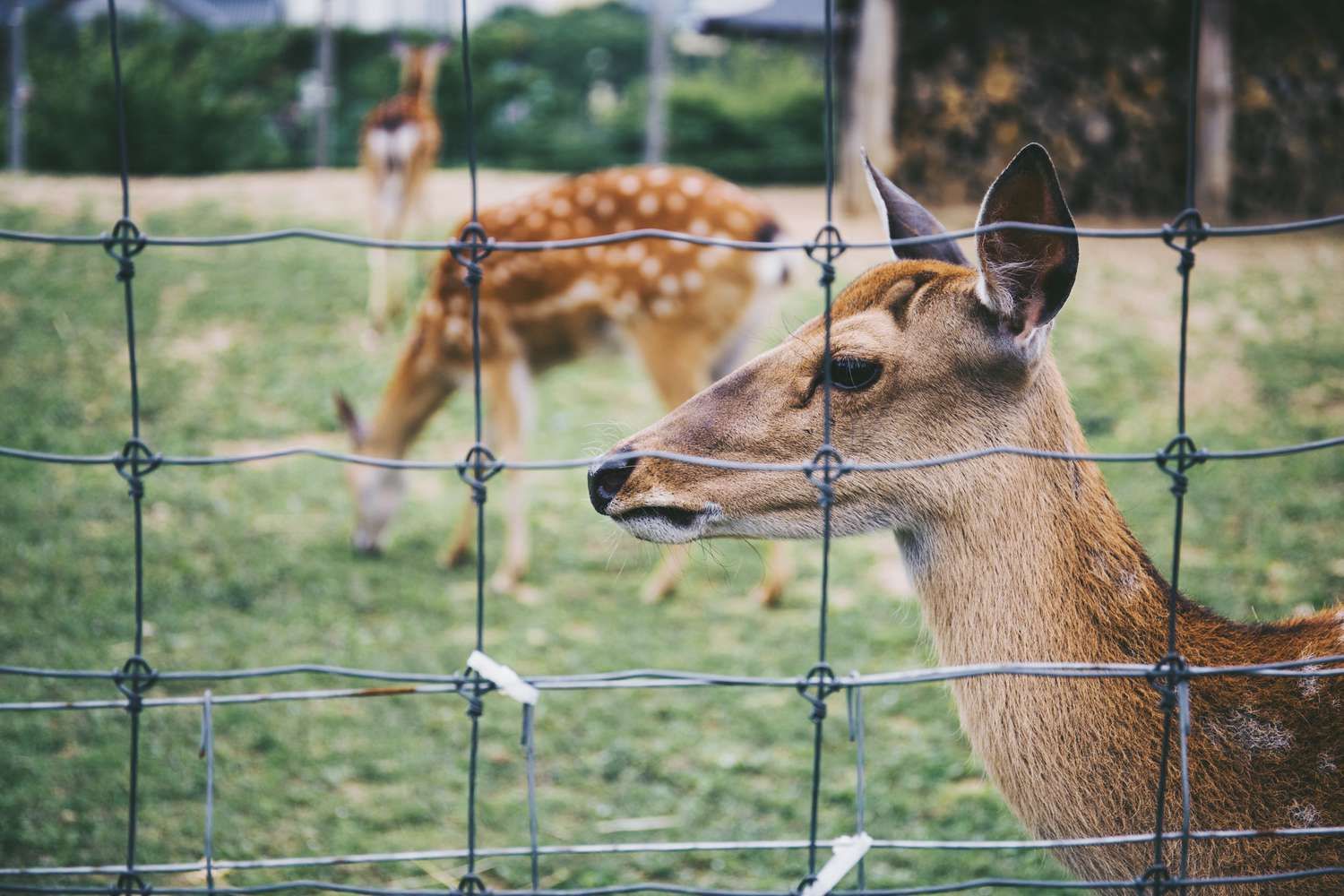
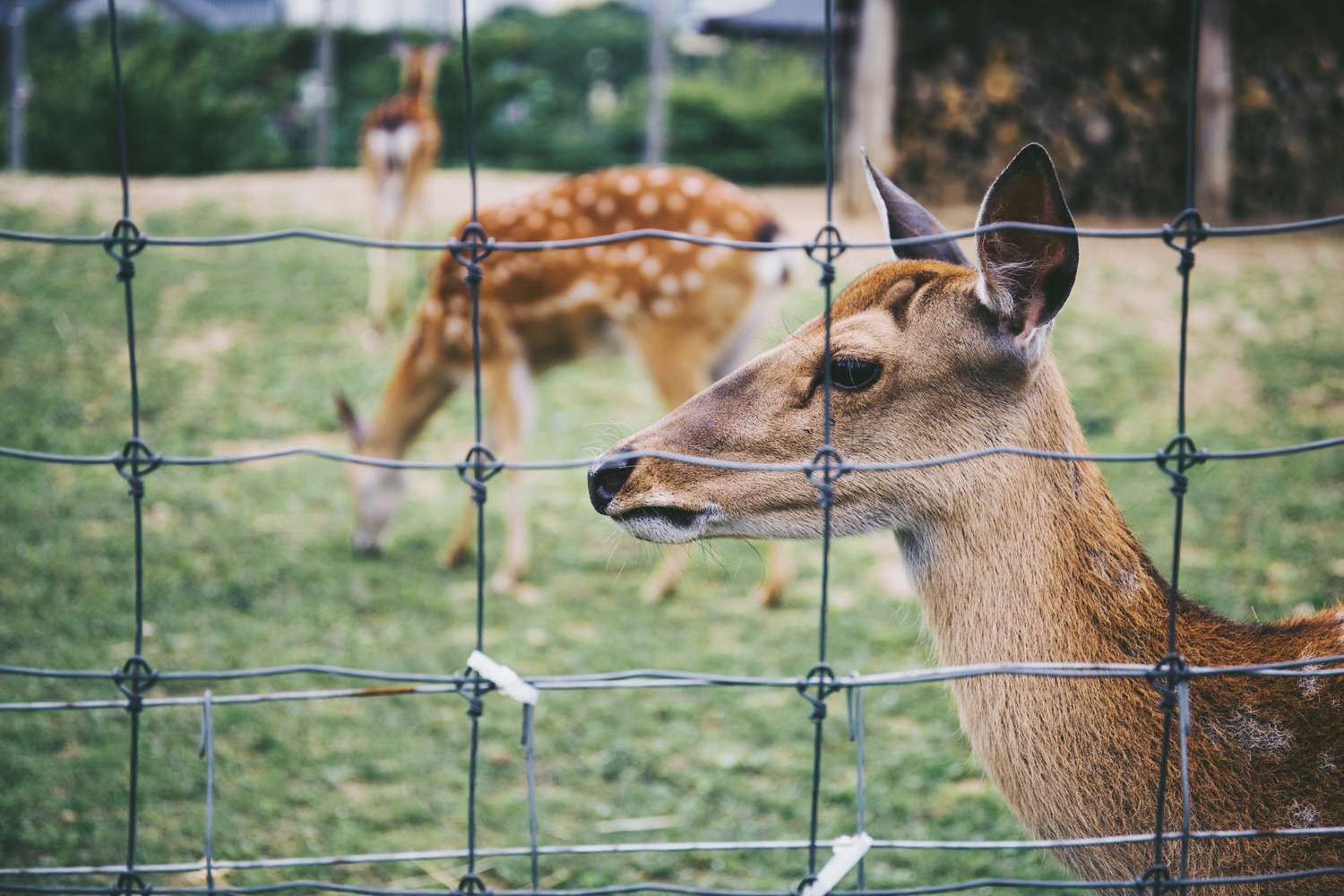
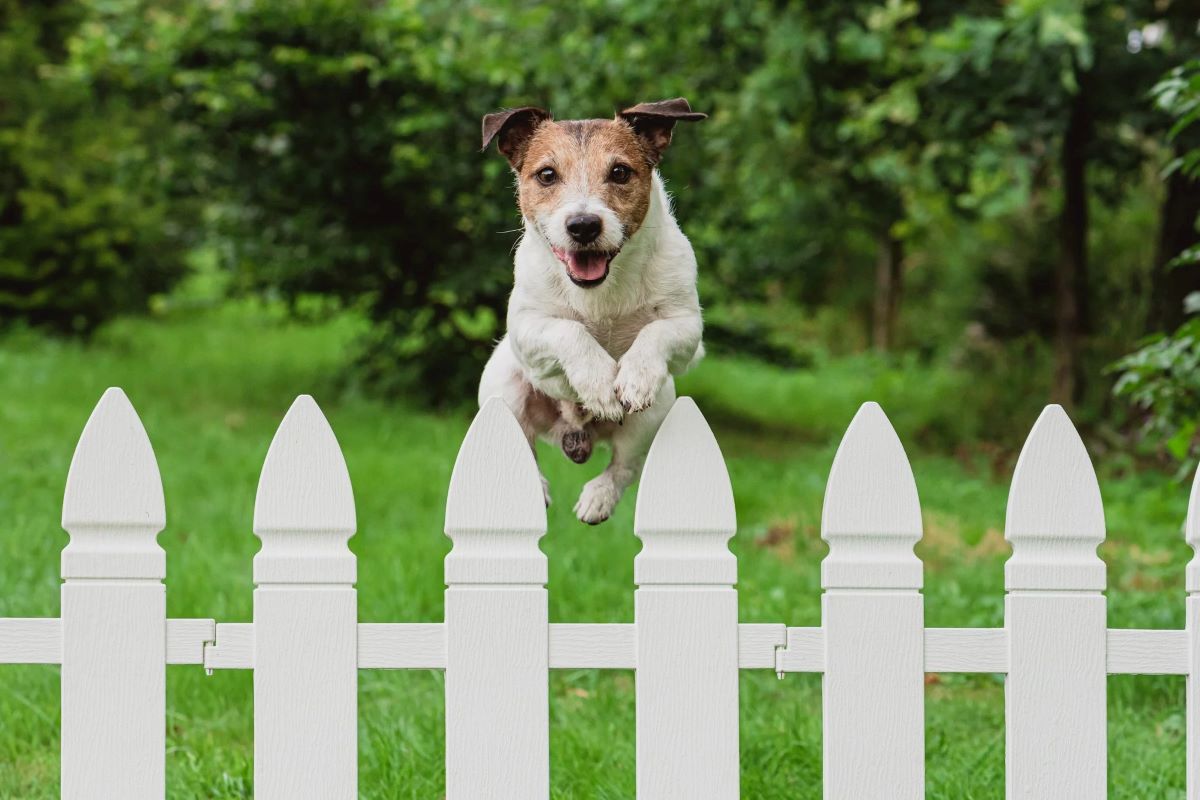
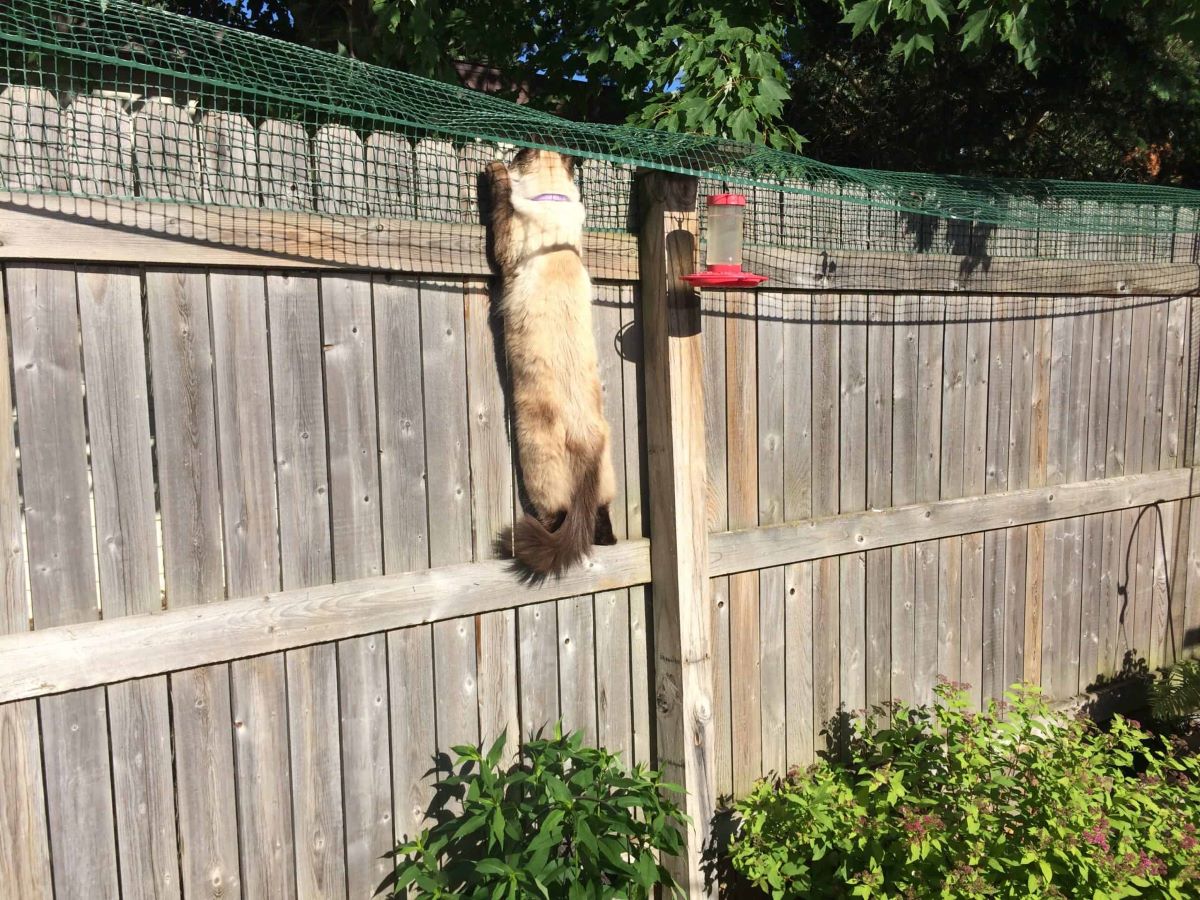


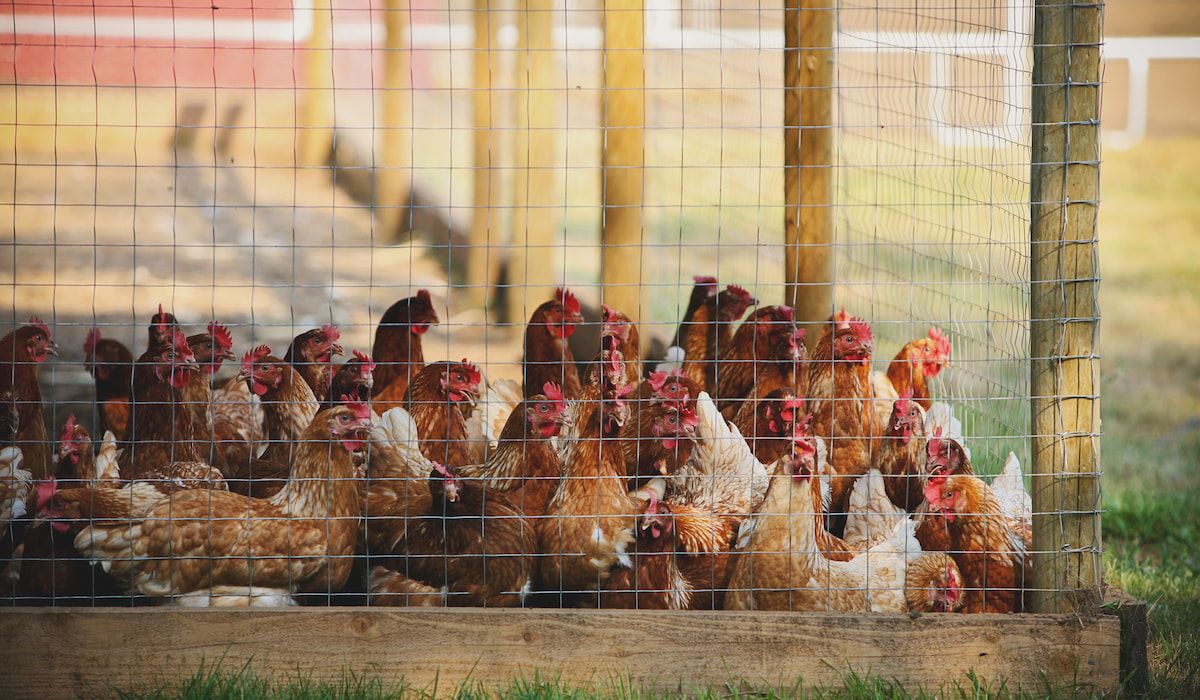
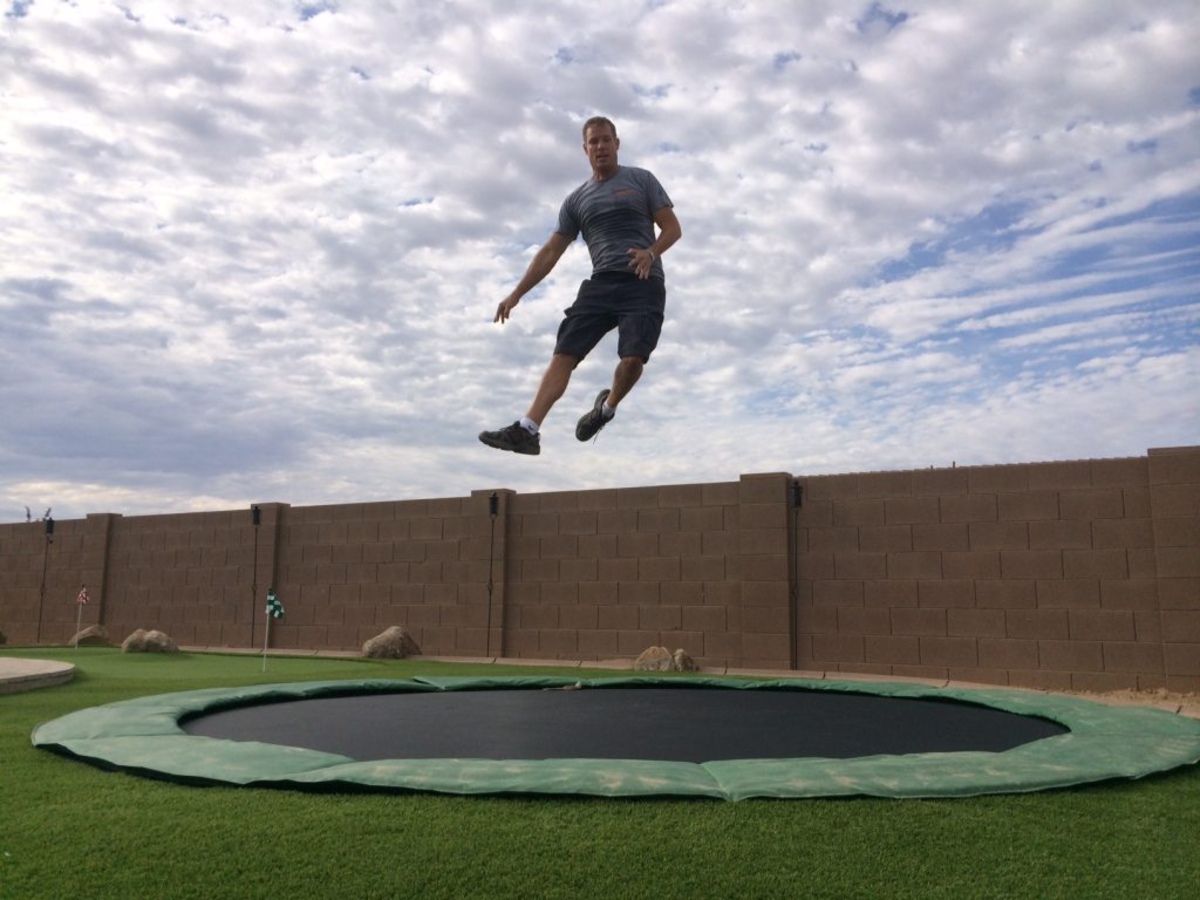


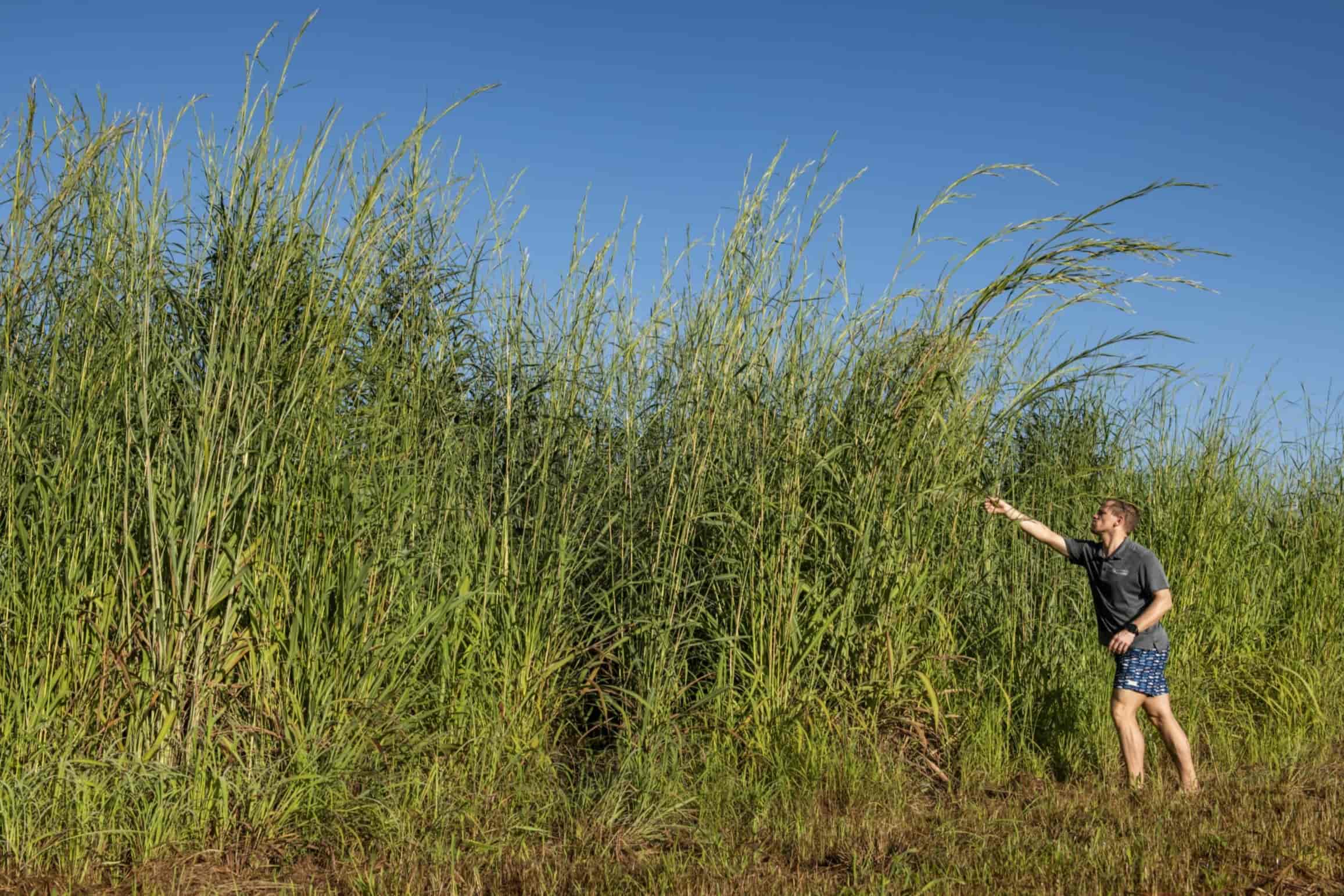
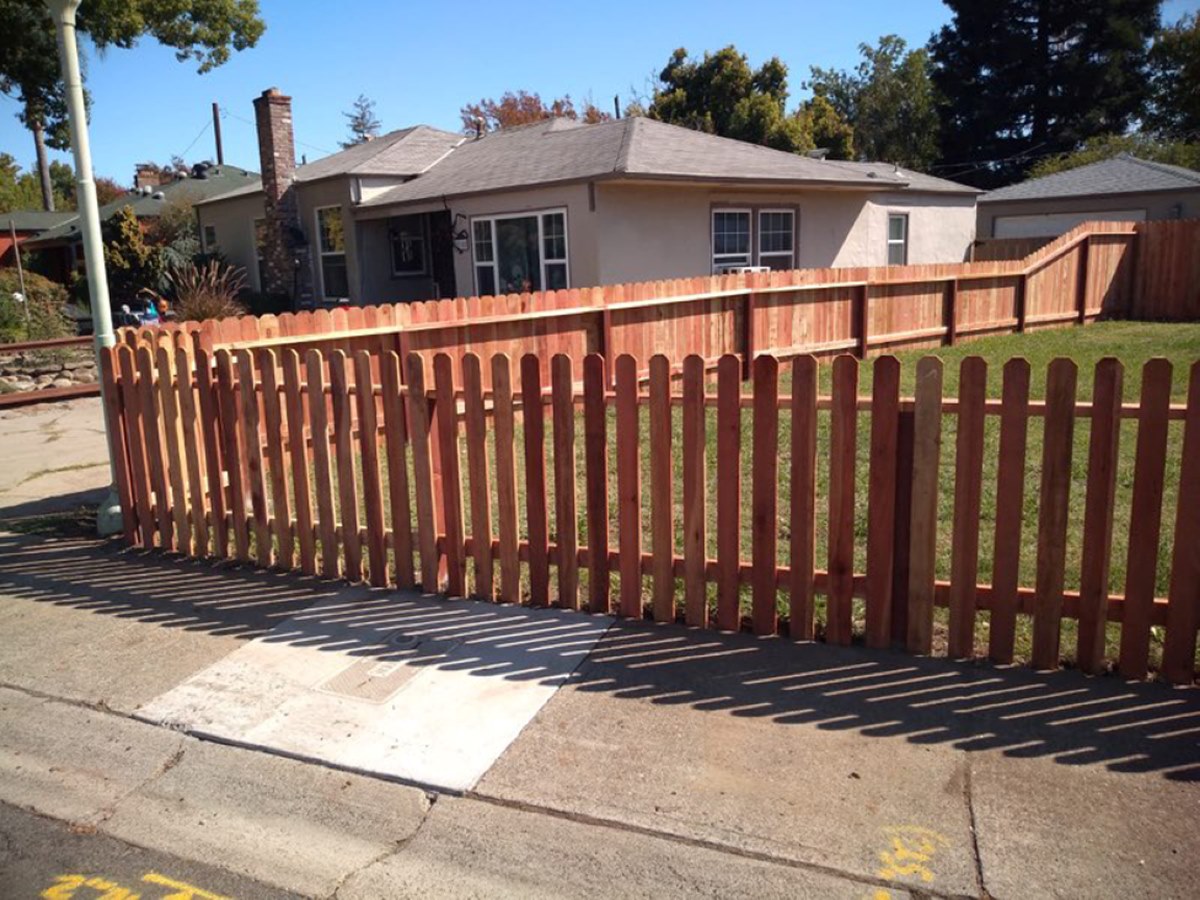


0 thoughts on “How High Can Deer Jump Over A Fence”